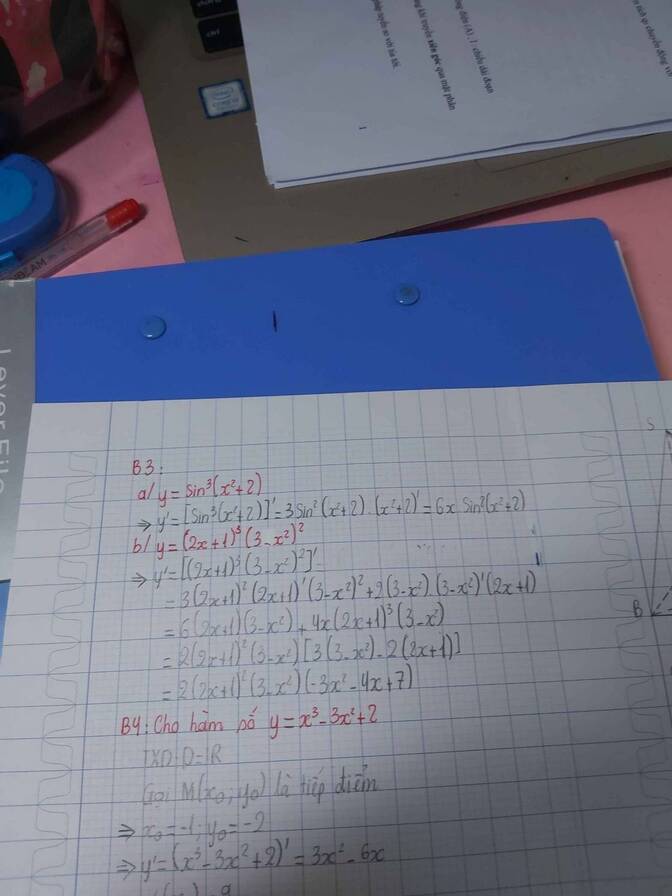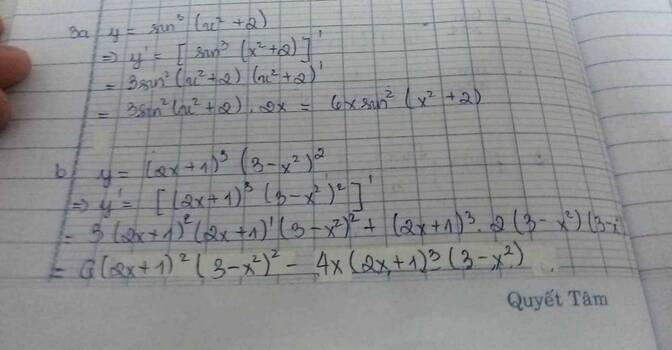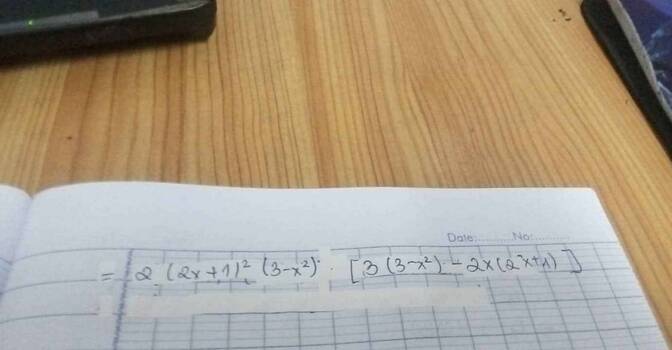
Hãy nhập câu hỏi của bạn vào đây, nếu là tài khoản VIP, bạn sẽ được ưu tiên trả lời.


Ta có \(y'=x^2-x\left(sina+cosa\right)+\frac{3}{4}sin2a\)
Để y có cực đại và cực tiểu thì y' đổi dấu hai lần, tức là:
\(\Delta=\left(sina+cosa\right)^2-3sin2a>0\)
\(\Leftrightarrow1+sin2a-3sin2a>0\)
\(\Leftrightarrow sin2a< \frac{1}{2}\)
\(\Leftrightarrow\frac{5\eta}{6}+k2\eta< 2a< \frac{13\eta}{6}+k2\eta\)
\(\Leftrightarrow\frac{5\eta}{12}+k\eta< a< \frac{13\eta}{12}+k\eta\)
Tại cực trị \(y'=0\Leftrightarrow x^2-x\left(sina+cosa\right)+\frac{3}{4}sin2a=0\)(*)
(*) cho ta\(x_1+x_2=sina+cosa,x_1x_2=\frac{3}{4}sin2a\)(*)
Để \(x_1+x_2=x^2_1+x^2_2\)thì \(x_1+x_2=\left(x_1+x_2\right)^2-2x_1+x_2\)
\(\Leftrightarrow sina+cosa=\left(sina+cosa\right)^2-\frac{3}{2}sin2a\)
\(\Leftrightarrow sina+cosa=1-\frac{1}{2}sin2a\)
Đặt \(t=cosa+sina=\sqrt{2}cos\left(a-\frac{\eta}{4}\right),t\in\left[-\sqrt{2},\sqrt{2}\right]\)
\(t^2=1+sin2a\Rightarrow sin2a=t^2-1\)
Do đó phương trình trên trở thành:
\(t=1-\frac{1}{2}\left(t^2-1\right)\Leftrightarrow2t=3-t^2\)
\(\Leftrightarrow t^2+2t-3=0\Leftrightarrow t=1,t=-3\)
Vì\(t\in\left[-\sqrt{2},\sqrt{2}\right]\)nên chỉ nhân t=1
\(\Rightarrow cos\left(a-\frac{\eta}{4}\right)=\frac{\sqrt{2}}{2}=cos\frac{\eta}{4}\)
\(\Leftrightarrow a-\frac{\eta}{4}=\pm\frac{\eta}{4}+k2\eta\)
\(\Leftrightarrow a=k2\eta\)hay \(a=\frac{\eta}{2}+k2\eta\)(thỏa điều kiện câu a)

Chọn A
Áp dụng sin u / , với u = cos 2 x tan 2 x
y ' = cos cos 2 x . tan 2 x . cos 2 x . tan 2 x / .
Tính cos 2 x . tan 2 x / , bước đầu sử dụng u . v / , sau đó sử dụng u α / .
cos 2 x . tan 2 x / = cos 2 x / . tan 2 x + tan 2 x / . cos 2 x
= 2 cos x cos x / tan 2 x + 2 tan x tan x / cos 2 x
= − 2 sin x cos x tan 2 x + 2 tan x 1 cos 2 x cos 2 x = − sin 2 x tan 2 x + 2 tan x .
Vậy y ' = cos cos 2 x . tan 2 x − sin 2 x tan 2 x + 2 tan x

Chọn C
Đầu tiên áp dụng u α / , với u = sin cos tan 4 3 x
y ' = 2 sin cos tan 4 3 x . sin cos tan 4 3 x /
Sau đó áp dụng sin u / , với u = cos tan 4 3 x
y ' = 2 sin cos tan 4 3 x . cos cos tan 4 3 x . cos tan 4 3 x /
Áp dụng cos u / , với u = tan 4 3 x .
y ' = − sin 2 cos tan 4 3 x . sin tan 4 3 x . tan 4 3 x / .
Áp dụng u α / , với u = tan 3 x
y ' = − sin 2 cos tan 4 3 x . sin tan 4 3 x .4 tan 3 3 x . tan 3 x / .
y ' = − sin 2 cos tan 4 3 x . sin tan 4 3 x .4 tan 3 3 x . 1 + tan 2 3 x . 3 x / .
y ' = − sin 2 cos tan 4 3 x . sin tan 4 3 x .4 tan 3 3 x . 1 + tan 3 3 x .3

xét hàm số y=\(x.e^x.lnx\)
Ta có y' =\(e^xlnx+xe^xlnx+xe^x.\frac{1}{x}\)
=\(e^xlnx+xe^xlnx+e^x\left(1+lnx+x.lnx\right)\)

Chọn D
Bước đầu tiên áp dung công thức u α / với u = sin 2 x + 1
Vậy
y ' = sin 3 2 x + 1 / = 3 sin 2 2 x + 1 . sin 2 x + 1 / .
* Tính sin 2 x + 1 / : Áp dụng sin u / , với u = 2 x + 1
Ta được:
sin 2 x + 1 / = cos 2 x + 1 . 2 x + 1 / = 2 cos 2 x + 1 .
⇒ y ' = 3. sin 2 2 x + 1 .2 cos 2 x + 1 = 6 sin 2 2 x + 1 cos 2 x + 1 .

Chọn D.
Bước đầu tiên ta áp dụng công thức u α / với u = sin x 1 + cos x
y ' = 3 sin x 1 + cos x 2 . sin 1 + cos x /
Tính :
sin x 1 + cos x / = sin x / 1 + cos x − 1 + cos x / . sin x 1 + cos x 2 = cos x 1 + cos x + sin 2 x 1 + cos x 2
= cos x + cos 2 x + sin 2 x 1 + cos x 2 = cosx + 1 ( 1 + c osx) 2 = 1 1 + cos x .
Vậy
y ' = 3 sin x 1 + cos x 2 . 1 1 + cos x = 3 sin 2 x 1 + cos x 3

y = tan x + cot x ⇒ y ' = ( tan x + cot x ) ' = ( tan x ) ' + ( cot x ) ' = 1 cos 2 x − 1 sin 2 x
Chọn đáp án D



y'=( xsina+ cosa )'( xcosa - sina)+( xsina+ cosa )( xcosa - sina)'
=(cosx-sinx)( xcosa - sina)+( xsina+ cosa )(-sinx-cosa);
=cosx.xcosa-sinx.sina-xsina.sinx-cosa.xsina-cosa.sinx-cos²a